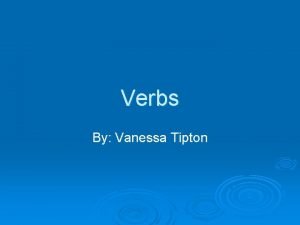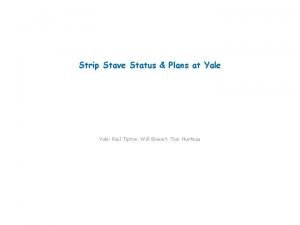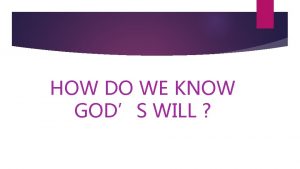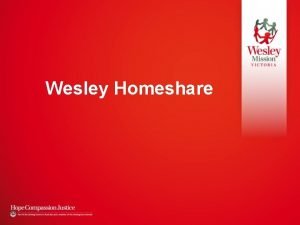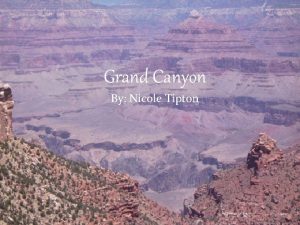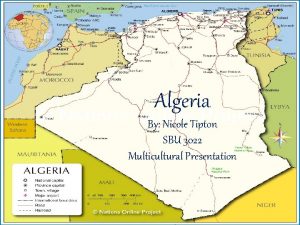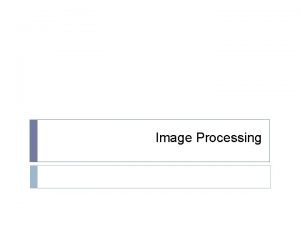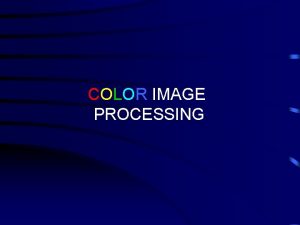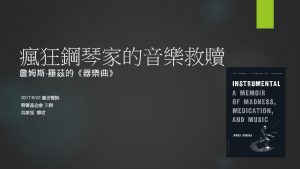IMAGE PROCESSING IN CHEMISTRY Wesley Rhodes Nicole Tipton










- Slides: 10

IMAGE PROCESSING IN CHEMISTRY Wesley Rhodes & Nicole Tipton Academy of Science Summer Bridge Program First Year Seminar - Summer 2012

IMAGE PROCESSING IN CHEMISTRY • The study of any algorithm that takes an image as input and returns an image as output. • Includes feature detection and image display • The image shows composition, structure, and dynamics of the chemical sample.

APPLICATIONS OF IMAGE PROCESSING • Medical diagnosis from an image • Magnetic Resonance Imaging (MRI) • Positron Emission Tomography (PET) • Image segmentation: partitions digital image into segments • Textural Analysis

MAGNETIC RESONANCE IMAGING (MRI) • Using MRI images, doctors can visualize the organs or structures of the human body and determine whethere is any abnormality.

MRI CONTINUED • MRI scanner creates a superconducting field around the patient that lines up the hydrogen protons in the body. • A resonance scan is directed at the stationary hydrogen protons. • Unpaired hydrogen protons absorb the RF scan and emit signals back to the coil that is sending the RF signal. • Signals are digitized and turned into images

POSITRON EMISSION TOMOGRAPHY (PET) • PET images provide three dimensional images of organs or tissues and display their health status.

TEXTURE ANALYSIS • Used to find partitions of the image pixels to form coherent image properties such as: • brightness, color, and texture.

TEXTURE ANALYSIS: EXAMPLE • Extracts texture features and derives an image coding scheme for presenting selected features • Used to examine characteristics of plastic particles in plankton samples collected routinely in Northeast Pacific ecosystems

ACKNOWLEDGEMENTS • Dr. Tashakkori • Dr. Burris • Dr. Kurtz • Dr. Schwab • Appalachian State Summer Bridge Program • National Science Foundation

WORKS CITED • Coyne, K. (n. d. ). MRI: A Guided Tour. magnet. fsu. edu. Retrieved from http: //www. magnet. fsu. edu/education/tutorials/magnetacademy/mri/ • PET Scan. (n. d. ). jfkmc. org. Retrieved from http: //jfkmc. org/pet-scan • Kucheryavski, S. (n. d. ). Extracting useful information from images. sciencedirect. com. Retrieved from http: //www. sciencedirect. com/science/article/pii/S 0169743910002297 • West (n. d. ). Metabolic Imaging: How PET Scans Are Changing Oncology. cancergrace. org. Retrieved from http: //cancergrace. org/cancer 101/2007/01/09/pet-scanning-intro/ • PET Scan. (n. d. ). my. clevelandclinic. org. Retrieved from http: //my. clevelandclinic. org/services/pet_scan/hic_pet_scan. aspx • Positron Emission Tomography (PET). (n. d. ). neurocog. psy. tufts. edu. Retrieved from http: //neurocog. psy. tufts. edu/images/positron_emission_tomography. htm • Doyle, M. J. , Watson, W. , Bowlin, N. M. , & Sheavly, S. B. (n. d. ). Plastic particles in coastal pelagic ecosystems of the Northeast Pacific ocean. www. elsevier. com/locate/marenvrev. Retrieved from http: //www. pmel. noaa. gov/foci/publications/2011/doyl 0755. pdf
 Vanessa tipton
Vanessa tipton Paul tipton yale
Paul tipton yale John wesley quadrilateral image
John wesley quadrilateral image John wesley quadrilateral image
John wesley quadrilateral image Point processing and neighbourhood processing
Point processing and neighbourhood processing Image enhancement by point processing
Image enhancement by point processing Histogram processing in digital image processing
Histogram processing in digital image processing A generalization of unsharp masking is
A generalization of unsharp masking is Image processing
Image processing Gonzalez
Gonzalez Image transform in digital image processing
Image transform in digital image processing
